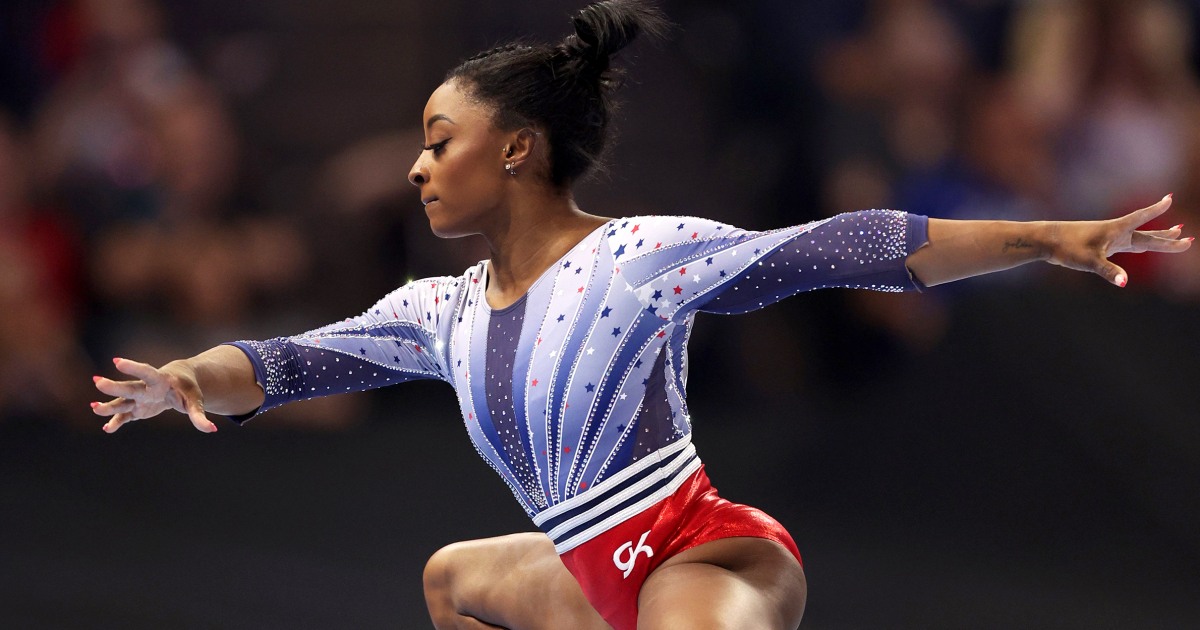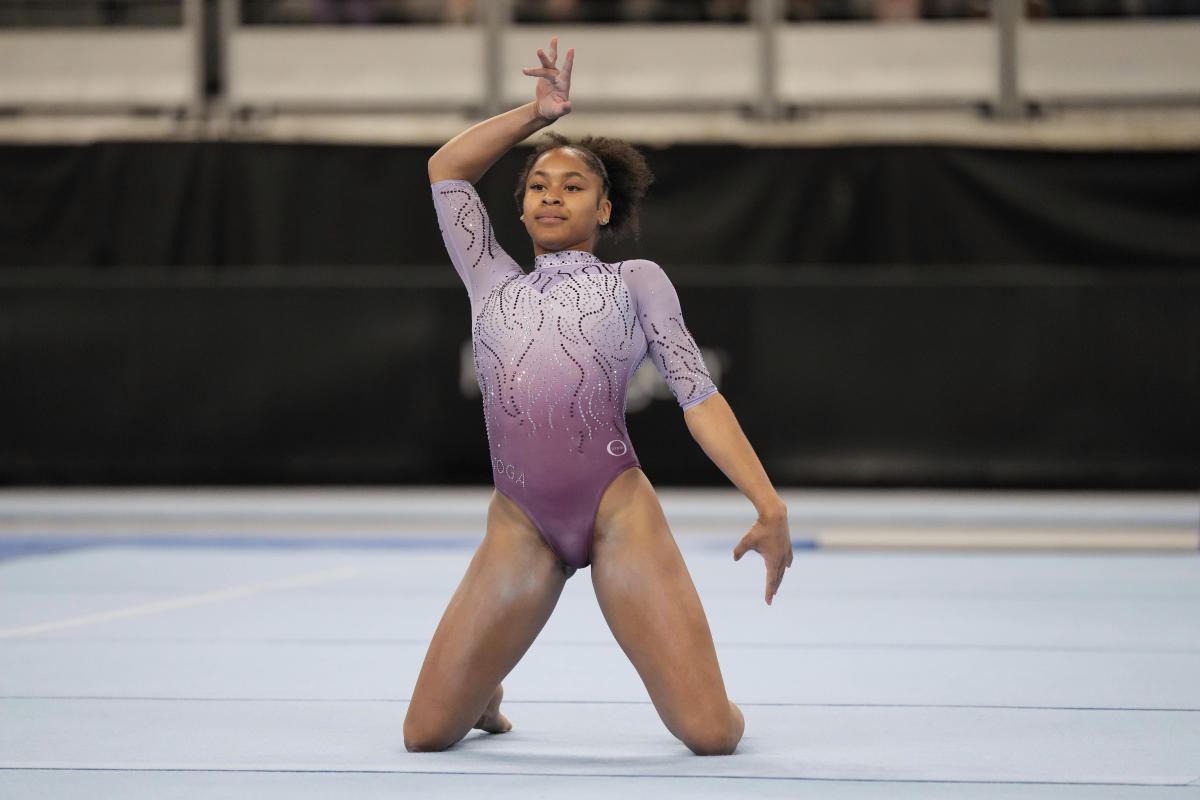Types of Gymnastics Injuries

Gymnastics injuries – Gymnastics is a demanding sport that requires athletes to perform complex and often dangerous maneuvers. As a result, gymnasts are at risk for a variety of injuries.
The unforgiving nature of gymnastics often leads to injuries, and the grueling Olympic trials are no exception. Take the recent case of gymnastics olympic trials injury , where a promising athlete’s dreams were shattered by an unfortunate mishap. These injuries are a stark reminder of the physical toll this demanding sport takes on its participants.
The most common types of gymnastics injuries are:
- Sprains and strains are injuries to ligaments and tendons, respectively. They can occur anywhere in the body, but are most common in the ankles, knees, and wrists.
- Fractures are breaks in bones. They can occur anywhere in the body, but are most common in the wrists, ankles, and feet.
- Dislocations are injuries in which bones are forced out of their normal position. They can occur anywhere in the body, but are most common in the shoulders, elbows, and knees.
- Concussions are injuries to the brain that can occur when the head is hit hard. They can cause a variety of symptoms, including headaches, nausea, vomiting, and confusion.
- Overuse injuries are injuries that develop over time due to repetitive use of a particular muscle or joint. They can occur anywhere in the body, but are most common in the wrists, elbows, and knees.
The causes of gymnastics injuries vary depending on the type of injury. However, some of the most common causes include:
- Improper technique can put excessive stress on muscles and joints, leading to injuries.
- Overtraining can lead to overuse injuries.
- Inadequate warm-up can increase the risk of sprains and strains.
- Inadequate conditioning can increase the risk of fractures and dislocations.
- Poor nutrition can weaken bones and muscles, making them more susceptible to injury.
The risk factors for gymnastics injuries also vary depending on the type of injury. However, some of the most common risk factors include:
- Age: Younger gymnasts are more likely to experience sprains and strains, while older gymnasts are more likely to experience fractures and dislocations.
- Gender: Female gymnasts are more likely to experience knee injuries, while male gymnasts are more likely to experience shoulder injuries.
- Skill level: Gymnasts who perform more difficult skills are at greater risk for injury.
- Training environment: Gymnasts who train in poorly maintained or unsupervised facilities are at greater risk for injury.
Prevention and Management of Gymnastics Injuries
Gymnastics is a physically demanding sport that carries a risk of injuries. However, many of these injuries can be prevented through proper training techniques, conditioning, and warm-up routines. Additionally, prompt and appropriate management of injuries is crucial for a quick and full recovery.
Prevention
Gymnasts should receive proper training from qualified coaches who emphasize safe and correct techniques. Regular conditioning exercises, such as strength training, flexibility exercises, and cardiovascular training, can help improve overall fitness and reduce the risk of injuries.
- Warm-up routines before training and competitions are essential to prepare the body for the strenuous activities involved in gymnastics.
- Gymnasts should wear appropriate clothing and footwear to minimize the risk of injuries.
- The training environment should be safe, with proper equipment and adequate supervision.
Management
In the event of an injury, first aid should be administered immediately. This may include rest, ice, compression, and elevation (RICE). Rehabilitation exercises should be prescribed by a qualified physical therapist or doctor to help restore range of motion, strength, and function.
- In some cases, surgery may be necessary to repair damaged tissues.
- Recovery protocols should be followed carefully to ensure a full and timely recovery.
- Gymnasts should gradually return to training and competition to avoid re-injury.
Impact of Gymnastics Injuries on Athletes
Gymnastics, a physically demanding sport, exposes athletes to various risks of injuries. These injuries can have significant physical, emotional, and psychological consequences, impacting their overall well-being and athletic performance.
Understanding the impact of gymnastics injuries is crucial for athletes, coaches, and medical professionals. Early detection and intervention play a vital role in minimizing long-term consequences and facilitating a timely return to the sport.
Physical Effects
Gymnastics injuries can range from minor sprains and strains to severe fractures and dislocations. The physical effects of these injuries can include:
- Pain and discomfort
- Reduced range of motion
- Muscle weakness
- Joint instability
- Delayed or impaired healing
- Increased risk of future injuries
Emotional Effects, Gymnastics injuries
Gymnastics injuries can also have a significant emotional impact on athletes. They may experience:
- Frustration and disappointment
- Anxiety and fear
- Loss of motivation
- Social isolation
- Depression
Psychological Effects
The psychological effects of gymnastics injuries can include:
- Reduced self-confidence
- Impaired concentration
- Difficulty sleeping
- Increased stress levels
- Post-traumatic stress disorder (PTSD)
Gymnastics injuries can be particularly challenging for athletes due to the high-impact nature of the sport. However, with proper training and conditioning, gymnasts can reduce their risk of injury. The men’s gymnastics team , for example, undergoes rigorous training programs that emphasize proper technique and injury prevention.
